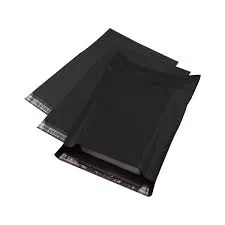eco friendly bag packaging
Eco-Friendly Bag Packaging A Sustainable Future
In today's world, the conversation around sustainability has reached a critical threshold. With concerns about climate change, pollution, and resource depletion becoming more urgent, consumers are increasingly seeking eco-friendly solutions in their everyday lives. One area that has gained significant attention is packaging, particularly bag packaging. The shift towards eco-friendly bag packaging is not just a trend but a necessary response to environmental challenges.
The Need for Change
Traditional packaging, especially plastic bags, has long been a culprit in environmental degradation. Single-use plastics contribute to pollution, harm wildlife, and take centuries to decompose. According to recent studies, millions of tons of plastic waste end up in oceans each year, affecting marine life and entering the food chain. The pressing need for alternatives has led to the emergence of eco-friendly bag packaging options that minimize ecological footprints.
What Makes a Bag Eco-Friendly?
Eco-friendly bag packaging encompasses a variety of materials and practices aimed at reducing environmental harm. Some of the most commonly used materials include
1. Biodegradable Plastics Unlike conventional plastics, biodegradable plastics break down more easily in natural environments. They are often made from renewable resources like cornstarch or sugarcane and can decompose in a matter of months under the right conditions.
2. Recycled Materials Bags made from recycled paper or plastics help reduce the demand for new raw materials. This process not only conserves resources but also decreases energy consumption and emissions associated with the production of new materials.
3. Natural Fibers Bags crafted from natural fibers, such as cotton, hemp, or jute, are durable and compostable. They can be reused multiple times, making them an excellent long-term solution to the single-use bag problem.
eco friendly bag packaging

4. Plant-Based Materials Innovations in packaging have led to the creation of bags made from plant-based materials, such as bamboo or mushroom leather. These materials are often sustainable and can decompose without leaving harmful residues.
Benefits of Eco-Friendly Bag Packaging
The adoption of eco-friendly bag packaging not only benefits the environment but also aligns with consumer values. Research shows that a growing number of consumers are willing to pay a premium for products that are sustainably packaged. This market shift encourages businesses to adopt environmentally-friendly practices, which can enhance their brand reputation and customer loyalty.
Moreover, using eco-friendly bags can have significant cost advantages. While the initial investment might be higher, companies can save money in the long run by reducing waste disposal fees and taking advantage of incentives for sustainable practices. Additionally, many governments worldwide are beginning to implement regulations on single-use plastics, making the transition to eco-friendly packaging not just beneficial but necessary for compliance.
Challenges to Implementation
Despite the clear benefits, there are challenges to the widespread implementation of eco-friendly bag packaging. The availability and cost of sustainable materials can be a barrier for some businesses, particularly small enterprises. Additionally, there is often a lack of awareness among consumers regarding the differences between eco-friendly options and traditional plastics. To combat this, education and clear labeling are crucial.
Another challenge is the scalability of eco-friendly materials. As demand grows, ensuring a sustainable supply chain that can keep pace with production needs is essential. Collaboration between businesses, policymakers, and environmental organizations can help create systems that support the growth of sustainable packaging solutions.
Conclusion
As the environmental impact of packaging continues to be scrutinized, eco-friendly bag packaging emerges as a crucial component of sustainable practices. By embracing biodegradable materials, recycled substances, and natural fibers, we can significantly reduce our ecological footprints. The shift to eco-friendly solutions is not merely an option; it is a responsibility we must all undertake to ensure a healthier planet for future generations. As consumers, businesses, and policymakers work together, we can move towards a sustainable future where eco-friendly bag packaging becomes the norm, not the exception.
-
The Best Uses for Small Trash Bags in Daily LifeNewsJul.01,2025
-
Stylish Reusable Grocery Bags TrendsNewsJul.01,2025
-
Shipping Advantages of Using Bubble Envelopes BulkNewsJul.01,2025
-
How Compostable Mailing Bags Reduce Environmental ImpactNewsJul.01,2025
-
Environmentally - Friendly Bulk Poly MailersNewsJul.01,2025
-
Eco Friendly Custom Laminated Tote BagsNewsJul.01,2025
-
Have the freedom of customizing your custom mailers any way you want! Our dedicated packaging support will help deliver you the mailing experience you need to elevate your shipping experience to the next level! Start making a strong impression on your customers and stand out from your competitors! -
LIYA uses high quality raw materials which directly purchased from large enterprises domestic and overseas such as PetroChina, Sinopec, Sabic, Equate, ExxonMobil, Dow Chemical, Total, and Borouge, ensuring the price advantage and quality of the raw materials. -
LIYA uses high quality raw materials which directly purchased from large enterprises domestic and overseas such as PetroChina, Sinopec, Sabic, Equate, ExxonMobil, Dow Chemical, Total, and Borouge, ensuring the price advantage and quality of the raw materials.





